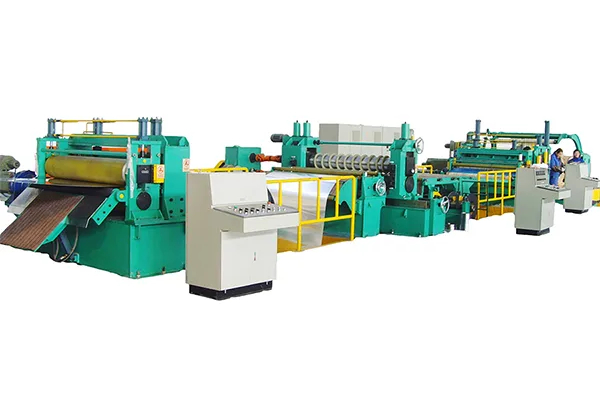
Innovative Techniques in Sheet Metal Folding- Enhancing Precision and Quality
- By:Metmac
- 2024-11-06
- 778
Introduction
Sheet metal folding is a crucial manufacturing process employed in diverse industries, ranging from automotive and aerospace to telecommunications and consumer electronics. With the increasing demand for precision, efficiency, and quality, conventional sheet metal folding techniques have undergone significant advancements to meet the challenges of the modern manufacturing landscape. Innovative techniques have emerged, transforming the sheet metal folding process by enhancing precision, reducing defects, and optimizing production efficiency. This article delves into the latest advancements in sheet metal folding, exploring their impact and benefits in ensuring the highest levels of accuracy, quality, and productivity.
Laser Cutting for Precise Blank Preparation
Laser cutting has revolutionized the creation of sheet metal blanks, providing exceptional precision and intricate cutting profiles. Compared to traditional mechanical shearing or stamping methods, laser cutting utilizes a high-powered laser beam to vaporize the material along the desired cutting path. This highly focused and precise process eliminates the need for physical contact, minimizing material distortion and edge deformation.
Advantages of Laser Cutting for Blank Preparation:
– Sub-millimeter Accuracy: Laser cutting enables the production of blanks with tight tolerances and minimal deviation from the intended shape.
– Complex Geometries: It allows the fabrication of complex shapes and intricate features with high precision, which is particularly advantageous for advanced applications.
– Reduced Material Wastage: Laser cutting minimizes material wastage by optimizing cutting patterns and reducing scrap.
– Faster Production: Automated laser cutting systems offer high-speed operation, enabling faster production cycles and improved efficiency.
Automated Bending for Enhanced Precision
Automated bending machines have significantly improved the accuracy and consistency of bending operations. These machines utilize computer-controlled systems to precisely manipulate the sheet metal, ensuring uniform bending angles and reducing the risk of human error. Automatic bending sequences can be programmed, eliminating the need for manual adjustments and reducing setup times.
Benefits of Automated Bending:
– Repeatable Bending: Automated bending ensures consistent bending angles and repeatability across multiple parts, reducing variability and improving product quality.
– High Precision: Computer-controlled systems maintain precise control over bending angles and locations, resulting in highly accurate bends.
– Reduced Setup Times: Automated bending sequences can be quickly reprogrammed for different parts, reducing setup times and increasing productivity.
– Improved Safety: Automated bending minimizes human involvement in the bending process, reducing the risk of accidents and injuries.
Hybrid Bending for Complex Shapes
Hybrid bending combines laser cutting and automated bending to create complex shapes with high precision. This technique involves laser cutting intricate profiles into the sheet metal, which are then folded at specific angles using an automated bending machine. By combining these processes, manufacturers can produce parts with complex geometries and sharp bends that would be difficult to achieve using traditional methods.
Advantages of Hybrid Bending:
– Greater Shape Complexity: Hybrid bending allows for the production of highly complex shapes that are not easily possible with conventional folding techniques.
– Precision Bending: The combination of laser cutting and automated bending ensures precise bending at specific angles and locations.
– Improved Material Strength: Laser cutting reduces material distortion, resulting in stronger and more durable bends.
– Reduced Production Time: Combining laser cutting and bending into a single process streamlines production and reduces overall lead times.
Finite Element Analysis (FEA) for Optimized Bending
Finite element analysis (FEA) is a powerful tool that provides insight into the behavior of sheet metal during bending processes. By simulating the bending process digitally, engineers can identify potential areas of deformation, stress concentrations, and springback. This information helps optimize bending parameters, such as tool geometry, bending force, and bending sequence, to achieve desired results.
Benefits of FEA in Sheet Metal Folding:
– Predictive Modeling: FEA simulations provide predictive models of the bending process, allowing engineers to optimize parameters before actual bending operations.
– Identification of Problem Areas: FEA highlights areas of potential deformation and failure, enabling manufacturers to address issues proactively.
– Optimized Bending Parameters: Simulations help determine optimal bending parameters to achieve precise and defect-free bends.
– Cost and Time Savings: By optimizing bending processes through FEA, manufacturers can reduce costs and shorten production lead times.
Innovative techniques in sheet metal folding have transformed the industry, enabling manufacturers to achieve exceptional precision, quality, and productivity. Laser cutting, automated bending, hybrid bending, and finite element analysis are leading the way in advancing sheet metal fabrication. These techniques provide manufacturers with the tools to create complex shapes, minimize defects, and optimize production processes. By embracing these innovations, manufacturers can gain a competitive edge, enhance product quality, and drive efficiency in the modern manufacturing environment.
-
Iron Sheet Laser Cutting Machine: Unmatched Precision for Demanding Fabrication with METMAC
2026/01/06 -
Precision Metal Cutting Machine: The Engine of Modern Manufacturing, Powered by METMAC
2026/01/06 -
Sheet Metal CNC Laser Cutting Machine: Precision Redefined with METMAC Technology
2026/01/06 -
Sheet Metal Press Brake for Sale: Find Your Precision Bending Solution with METMAC
2026/01/06
-
Advanced Sheet Metal Rolling, Laser Cutting, and Folding Machines for Precision Fabrication
2025/10/31 -
High-Performance Sheet Metal Bending and Cutting Machines for Modern Fabrication
2025/10/31 -
High-Quality Sheet Metal Equipment for Sale: Efficient Solutions for Modern Manufacturing
2025/10/31 -
High-Performance Sheet Metal Equipment for Sale: Forming and Shearing Solutions for Modern Fabrication
2025/10/22
-
A Guide to the Latest Innovations in Sheet Metal Folding Machines
2024/11/29 -
Key Features to Consider When Investing in a Sheet Metal Folding Machine
2024/11/28 -
Enhancing Precision with Advanced Sheet Metal Folding Machines
2024/11/27 -
How to Choose the Right Sheet Metal Folding Machine for Your Workshop
2024/11/26







